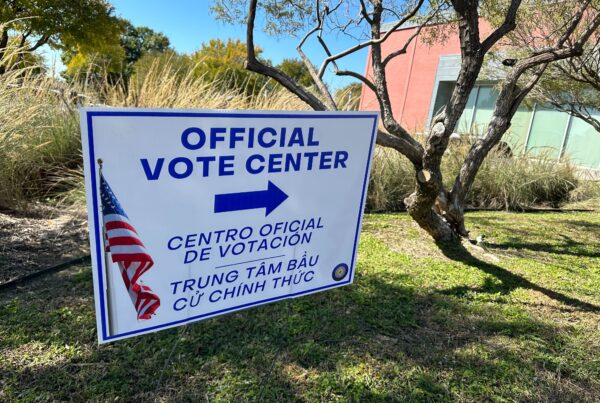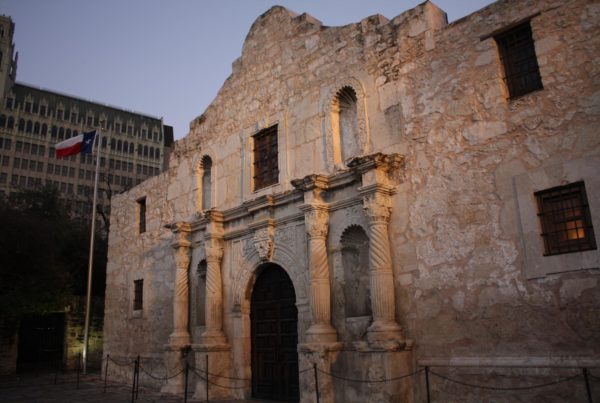Should Texas build more nuclear power plants? Gov. Greg Abbott and other GOP leaders are pushing for the development of nuclear plants, partly because they generate zero carbon emissions and use less land than other renewables. But nuclear energy also poses little threat to natural gas, an industry that’s long supported Republican campaigns.
Texas Monthly writer-at-large Loren Steffy explored why Texas leaders are embracing an atomic future in his latest article. He joined the Standard to tell us more.
This transcript has been lightly edited for clarity:
Texas Standard: There used to be widespread protests over nuclear power plants and indeed, there were many protests to shut them down. That was 25 or 30 years ago. It seems like there’s been a real reversal of opinion, broadly speaking.
Loren Steffy: There has been a real reversal, because what we need now is fuel that doesn’t emit carbon. Nuclear power is essentially carbon-free. It’s got its own waste issues, but it’s not contributing to greenhouse gas, which has made it attractive in a lot of people’s minds.
What challenges does Texas face in adopting nuclear power on a larger scale?
Well, obviously the issue of what to do with the waste is unresolved. Most nuclear waste is actually stored at the power-generating facilities right now.
One of the things we’re looking at is moving into what are called small modular reactors, which still generate nuclear waste. But the storage could become more problematic if we have more of these things sort of scattered around the state with no real place to put the radioactive waste.
What’s the number in terms of how many nuclear power plants Texas actually has right now?
We have two actual plants, each of which have two reactors. There’s Comanche Peak near Dallas and the South Texas Project near Houston. There is actually a plan to build two more reactors at the South Texas project, although that was greenlighted by the feds in 2016 and it’s really gone nowhere.
Building large scale reactors is, of course, very expensive. It takes a very long time. Given our electricity market, it’s very hard to tell if you’re ever going to earn that investment back. So, they’re not terribly attractive. But like I said, the smaller reactors are what most people are talking about these days.
These smaller reactors – small modular reactors and molten salt reactors – are they cleaner? Do they cost less to build? How do they differ from old-school nuclear reactors, the stuff that people were protesting decades ago?
If you remember, one of the big problems with nuclear power in the past was that it took forever to get these plants done. The federal regulations kept changing; new construction requirements kept being dropped into the process.
What the small reactors do is – yes, they’re cheaper to build, but they also are essentially built in a factory. So, they’re kind of pre-made and they’re very similar in design. You don’t have a lot of the construction issues, because it’s almost like buying a manufactured home: It comes ready to assemble, and you just put it together.
» GET MORE NEWS FROM AROUND THE STATE: Sign up for Texas Standard’s weekly newsletters
What about the issue of nuclear waste? How are nuclear energy advocates addressing that?
It’s still an issue, and it’s not something that’s really been addressed. We don’t have any long-term storage facilities for nuclear waste in the United States. There’s been talk about building a facility in West Texas, but that’s met with a lot of opposition.
That may be the biggest impediment to expansion of nuclear power, as you alluded to before. The public is very, very nervous about nuclear power. There have been, you know, accidents like Fukushima in Japan, Chernobyl, Three Mile Island. Those are still things that scare people a lot. We are likely to see the public protesting some of these things as they get built out.
Are there active proposals on the table right now? How close is this?
The first small modular reactor is scheduled to be delivered in Idaho in 2027. That’s the first one in the U.S.
Now, in Texas, there is actually a plan at Dow Chemical near Corpus Christi. They’re looking at putting in an SMR at their facility, which would generate power for that plant. That would be probably somewhere around the end of the decade or maybe a little beyond.
So, we’re kind of the No. 2 slot right now in terms of deployment of these things, at least as it stands right now. But we’re looking at quite a while before any of this stuff comes into play.













